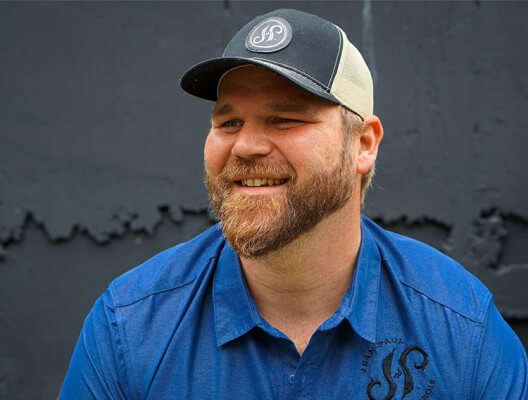By Jean-Paul Bourgeois
There’s just something about ribs. The smell of smoke, the sizzle on the grill, that first bite making you stop mid-sentence — it’s more than food; it’s a memory. For me, backribs are where it all started. I didn’t grow up around a lot of traditional barbecue, but my papaw—my mom’s dad—always made ribs when we visited. He passed when I was young, but those ribs stuck with me. They’re one of my earliest food memories, and maybe that’s why I never say no to them.
These days, whether I’m cooking ribs, pork belly or a bone-in loin roast, I’ve learned that picking the proper cut of pork makes all the difference. I’ll walk you through exactly what I look for at the meat counter — weight, color, marbling, consistency—so you can bring home the best pork for your next backyard cook.
BACKRIBS
Weight
- I aim for baby back ribs around 3 pounds per slab. If I see slabs around 3.25 or 3.5 pounds, I grab those—heavier ribs often cook better with my barbecue style.
Consistency in Color and Size
- Fat color should be pearly white with minimal blemishes
- Meat color should be rich pink to reddish
- Uniform rib dimensions are key, especially if you’re cooking multiple racks (which, let’s be honest, I always am). This helps with consistent cook times
Minimal Purge
- Excess moisture in the packaging—aka “purge”—is a red flag. It can mean poor storage or that the ribs were frozen and thawed. Even if that only happened once, I’m not taking chances. Look for purge in other cuts, too.
PORK BELLY
If I buy pork belly, it’s likely for one of three things: bacon, sausage grind, or slow-cooked dishes like braises or barbecue.
Consistency in Size
I usually buy whole bellies. Natural variation in fat-to-meat ratio is expected, but I’m mainly looking for:
- Even thickness
- Smooth surface (not lumpy)
- No odd cuts or imperfections
Fat & Meat Color
- Fat should be clean white. Meat should range from light to deep pink, sometimes even dark red—especially around the surface
Fat-to-Meat Ratio
- For bacon: A 50/50 meat (or lean)-to-fat ratio is ideal
- For sausage: I want more fat
- For braises or barbecue, I go for meat-heavy bellies to balance richness with texture
PORK LOIN
To me, pork loin is the most versatile pork cut. Smoke it, fry it, cure it, braise it, or grill it—it’s a winner every time. I can rattle off five killer recipes without even trying.
I especially love a bone-in pork loin. Here’s what I look for:
Marbling
- Intramuscular fat is your friend. The more marbling I can see throughout the loin, the better.
Even Size
- When selecting a section for a 5-bone roast, I look for consistent diameter. This ensures even cooking from edge to edge.
Color
I’m almost always buying skin-off, bone-in pork loin. Here’s what I want to see:
- Fat cap: Bright, pearly white with no blemishes
- Meat: Rich, saturated pink—almost red. Especially if I’m grilling chops to medium, I’m paying extra attention to the meat color and marbling
FINAL THOUGHTS
Choosing the right cut of pork isn’t just about grabbing the first package you see—it’s about being intentional. Weight, marbling, consistency and color affect how your final dish turns out.
Whether it’s ribs that remind me of my papaw, belly for a homemade bacon batch or a juicy bone-in loin roast, these are the cues I use to pick the best pork for the plate.

Jean-Paul Bourgeois is a Louisiana native, seasoned chef and host of Duck Camp Dinners, known for bold Southern flavors and open-fire cooking. As a Prairie Fresh ambassador, he shares authentic recipes, fiery techniques and stories that celebrate the spirit of outdoor gatherings.